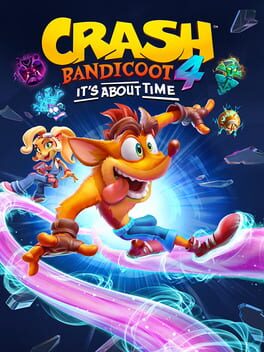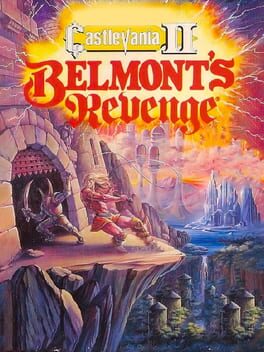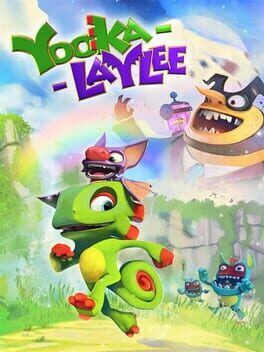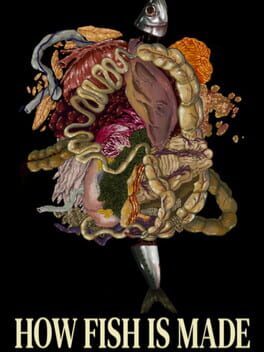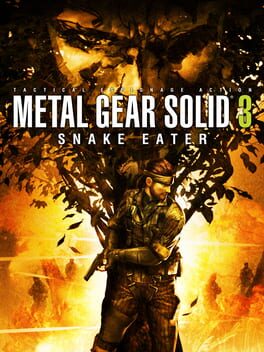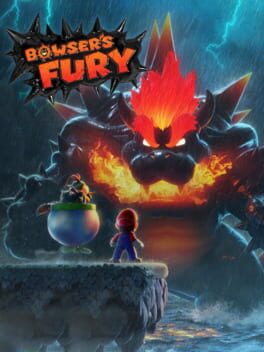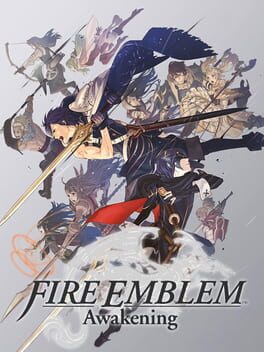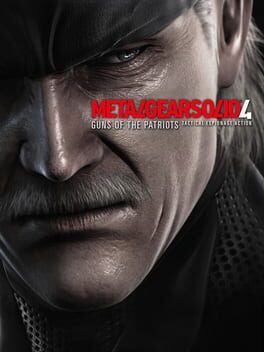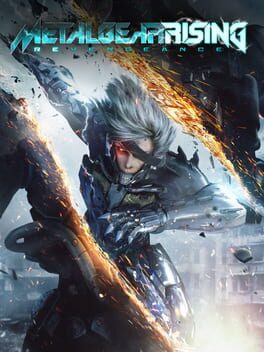Gerborious
2001
I remember this game feeling distinctly threatening to me when I was young. I wasn't used to making precise movements under pressure with the Wii pointer so things were rough for 8 year old me.
I think because of that history though I've grown very fond of Pikmin 1. I love the atmosphere, how the game is willing to only use ideas once, and how it encourages multiple playthroughs.
Playing through it again without any form of motion control, I've also found myself in love with controlling the Pikmin themselves. They're distinctly clumsy and disobedient, and the game uses that friction brilliantly. Managing your Pikmin is like herding cats, and the frustration that causes? That's where the soul is, the soul in the code!
My admiration for Pikmin 1 grows each time I replay it.
I think because of that history though I've grown very fond of Pikmin 1. I love the atmosphere, how the game is willing to only use ideas once, and how it encourages multiple playthroughs.
Playing through it again without any form of motion control, I've also found myself in love with controlling the Pikmin themselves. They're distinctly clumsy and disobedient, and the game uses that friction brilliantly. Managing your Pikmin is like herding cats, and the frustration that causes? That's where the soul is, the soul in the code!
My admiration for Pikmin 1 grows each time I replay it.
2022
Live A Live is one of the most joyful games I have ever played. It carries a playful attitude towards game design that many of the games that inspired me as a child did.
Every single chapter features a new setting, mechanical addition, structural twist, or tone of storytelling. One chapter features a detailed crafting system, another is centered around a complex training system, and one acts as a template for RPG maker horror games two years before the original release of Corpse Party.
I left Live A Live feeling invigorated and inspired; as the credits rolled and I thought about the game in its entirety, my mind was racing with game design ideas to explore on my own in the future. I've been actively working on ideas for a game inspired by the Wild West chapter in particular, but I think that discussion would be best left for when I actually make it.
Truly a wonderful game.
Every single chapter features a new setting, mechanical addition, structural twist, or tone of storytelling. One chapter features a detailed crafting system, another is centered around a complex training system, and one acts as a template for RPG maker horror games two years before the original release of Corpse Party.
I left Live A Live feeling invigorated and inspired; as the credits rolled and I thought about the game in its entirety, my mind was racing with game design ideas to explore on my own in the future. I've been actively working on ideas for a game inspired by the Wild West chapter in particular, but I think that discussion would be best left for when I actually make it.
Truly a wonderful game.
Absolutely insane how every time a new team brings an old platforming series out of the vault they manage to make one of, if not the best game in their respective series. First there was Donkey Kong Country, then Rayman, and now Crash.
Crash 4 gets as close to a 3D precision platformer as a mainstream title is likely ever going to get. I doubt that Nintendo would ever dare to try, and Sonic has gone open zone at this point, so that ship has sailed. Such an undertaking, no matter how well done it is, has some rough edges. Crash 4 is tight, definitely more consistent than the N.Sane Trilogy, but when the game asks for perfect precision, this just doesn't hold up. Additionally, the game could remove at least a few crates every level and be better off for it. Once the player knows to check behind walls, or above every stack of crates it's no longer an interesting secret. Especially when it's repeated so often.
The additional gimmicks are all pretty good! Aside from Tawna funnily enough, because of her similarities she just ends up feeling like a less engaging version of the core gameplay. Also, while Cortex and Dingodile are both fun, some of their levels are absurdly short. I know it isn't possible to divide game development like this, but I would've preferred the alternate timeline stages be cut entirely, and each character get an additional, entirely unique stage instead.
What I'm left with is a sense of expectation. I firmly believe that if this team got one more shot at making a sequel, we wouldn't just have the best Crash game on our hands, we would have one of the best platformers ever made. Donkey Kong and Rayman both had that opportunity, why not Crash?
Crash 4 gets as close to a 3D precision platformer as a mainstream title is likely ever going to get. I doubt that Nintendo would ever dare to try, and Sonic has gone open zone at this point, so that ship has sailed. Such an undertaking, no matter how well done it is, has some rough edges. Crash 4 is tight, definitely more consistent than the N.Sane Trilogy, but when the game asks for perfect precision, this just doesn't hold up. Additionally, the game could remove at least a few crates every level and be better off for it. Once the player knows to check behind walls, or above every stack of crates it's no longer an interesting secret. Especially when it's repeated so often.
The additional gimmicks are all pretty good! Aside from Tawna funnily enough, because of her similarities she just ends up feeling like a less engaging version of the core gameplay. Also, while Cortex and Dingodile are both fun, some of their levels are absurdly short. I know it isn't possible to divide game development like this, but I would've preferred the alternate timeline stages be cut entirely, and each character get an additional, entirely unique stage instead.
What I'm left with is a sense of expectation. I firmly believe that if this team got one more shot at making a sequel, we wouldn't just have the best Crash game on our hands, we would have one of the best platformers ever made. Donkey Kong and Rayman both had that opportunity, why not Crash?
Talk about massive improvement. Turns out that making your game playable is a good idea? Crazy!
Belmont's Revenge isn't as good as the original or Dracula's Curse, but it's a really solid adaptation to the smaller console. The design is creative, and carries forward what made The Adventure unique. It just focuses those ideas, and makes them fit better within the Castlevania framework.
Belmont's Revenge isn't as good as the original or Dracula's Curse, but it's a really solid adaptation to the smaller console. The design is creative, and carries forward what made The Adventure unique. It just focuses those ideas, and makes them fit better within the Castlevania framework.
2022
This was a very pleasant surprise! I wasn't very interested going into it, so it did end up exceeding my expectations.
This game shines when it allows you the freedom to explore. The more open levels are both densely populated with detail, but also have many intertwining paths and things to find. I felt extremely satisfied when I was able to find an item early, and then have it become relevant after returning to that area later. Unfortunately, a lot of the runtime is spent in more linear sections. These are fine, and still maintain the wonderful art direction, but I don't think they play to Stray's strengths.
This game shines when it allows you the freedom to explore. The more open levels are both densely populated with detail, but also have many intertwining paths and things to find. I felt extremely satisfied when I was able to find an item early, and then have it become relevant after returning to that area later. Unfortunately, a lot of the runtime is spent in more linear sections. These are fine, and still maintain the wonderful art direction, but I don't think they play to Stray's strengths.
2017
I have no nostalgia for Banjo-Kazooie or it's ilk, I got into games two console generations too late. However, I did play Banjo years later, and can understand that it's a pretty good game! The levels are dense, so even though the challenge is low the game is kept at an enjoyable brisk pace. The same cannot be said about Yooka-Laylee.
It's too big. The band certainly came back together, but what made their original run so beloved isn't there anymore.
It's too big. The band certainly came back together, but what made their original run so beloved isn't there anymore.
2022
Sonic Frontiers may be the happiest I've ever been about feeling that a game is pretty good.
I'll be honest, I was a complete doubter when it was first revealed. I thought that the aesthetic was poor, the game looked incredibly buggy, and that placing Sonic in an open area was a risky idea. After playing it, all of my worries were correct! The Starfall Islands are visually underwhelming, which isn't helped by the garish rails and platforms that litter the landscape and sky with some of the worst pop in I've ever experienced. The game is incredibly buggy, if Sonic hits a rock at a wrong angle, he will launch off into the air, sometimes ruining your attempts to use the Cyloop. Placing Sonic into an open area was a risky idea.
Luckily, I think that risk payed off.
Sonic Frontiers, warts and all, was one of the most fun experiences that I have had this year. Ultimately, this game is Sonic's first real stab at the 3D Collect-a-Thon formula. The main levels are dotted with boost pads, rails, springs, short missions, and linear platforming stages. In terms of the amount of collectables, and the mechanical intrigue of actually collecting them, Sonic Frontiers should be one of the worst Collect-a-Thons of all time. There are an absurd amount of collectables, and the vast majority of them are gained from the least interesting tasks imaginable.
Sonic has something unique though, his speed. In the worst of 3D Collect-a-Thons, it can take ages to comb through a stage for all the trinkets, and boring minigames can take minutes of your time, bringing the pacing to a screeching halt. In Sonic Frontiers however, the most menial of missions last only moments.
You start off using the games movement to launch Sonic off a slope into the end of one platforming challenge, before using a homing attack cancel to soar and land into an entirely separate collectable, finally landing back on the ground on top of a quick puzzle. Throw in some more involved moments into the mix like short boss fights, narrative segments, focused platforming stages, and fishing. Cap it all off with a mechanically simple, but enthralling boss fight. That is a killer formula.
I was genuinely positively surprised by Sonic Frontiers. If the next game that Sonic Team makes follows up on this formula, then consider it one of my most anticipated games for the next few years.
I'll be honest, I was a complete doubter when it was first revealed. I thought that the aesthetic was poor, the game looked incredibly buggy, and that placing Sonic in an open area was a risky idea. After playing it, all of my worries were correct! The Starfall Islands are visually underwhelming, which isn't helped by the garish rails and platforms that litter the landscape and sky with some of the worst pop in I've ever experienced. The game is incredibly buggy, if Sonic hits a rock at a wrong angle, he will launch off into the air, sometimes ruining your attempts to use the Cyloop. Placing Sonic into an open area was a risky idea.
Luckily, I think that risk payed off.
Sonic Frontiers, warts and all, was one of the most fun experiences that I have had this year. Ultimately, this game is Sonic's first real stab at the 3D Collect-a-Thon formula. The main levels are dotted with boost pads, rails, springs, short missions, and linear platforming stages. In terms of the amount of collectables, and the mechanical intrigue of actually collecting them, Sonic Frontiers should be one of the worst Collect-a-Thons of all time. There are an absurd amount of collectables, and the vast majority of them are gained from the least interesting tasks imaginable.
Sonic has something unique though, his speed. In the worst of 3D Collect-a-Thons, it can take ages to comb through a stage for all the trinkets, and boring minigames can take minutes of your time, bringing the pacing to a screeching halt. In Sonic Frontiers however, the most menial of missions last only moments.
You start off using the games movement to launch Sonic off a slope into the end of one platforming challenge, before using a homing attack cancel to soar and land into an entirely separate collectable, finally landing back on the ground on top of a quick puzzle. Throw in some more involved moments into the mix like short boss fights, narrative segments, focused platforming stages, and fishing. Cap it all off with a mechanically simple, but enthralling boss fight. That is a killer formula.
I was genuinely positively surprised by Sonic Frontiers. If the next game that Sonic Team makes follows up on this formula, then consider it one of my most anticipated games for the next few years.
2022
2022
Ragnarok improves upon the 2018 game in a lot of really strong ways. Enemy variety is way more pronounced, loot rarity has been removed so that the RPG mechanics are allowed to breathe, and the plot has a stronger forward momentum.
However, this only goes to show how the foundation that this game was built upon was rough. The combat is better, but the camera is still a constant issue. In most cases, I found it to actually be worse than in 2018. Additionally, the games lack of any meaningful gameplay outside of combat makes the campaign much harder to fully experience. Eventually I just got bored and turned down the difficulty from hard to normal.
All in all, this games achievements outnumber it's missteps. I'm sure that part of my struggle of finishing this game was because I started near immediately after replaying the first. In the end though, I think it was worth the time I spent with it.
However, this only goes to show how the foundation that this game was built upon was rough. The combat is better, but the camera is still a constant issue. In most cases, I found it to actually be worse than in 2018. Additionally, the games lack of any meaningful gameplay outside of combat makes the campaign much harder to fully experience. Eventually I just got bored and turned down the difficulty from hard to normal.
All in all, this games achievements outnumber it's missteps. I'm sure that part of my struggle of finishing this game was because I started near immediately after replaying the first. In the end though, I think it was worth the time I spent with it.
2013
Super Mario 3D World's greatest strength is it's consistency. When I think back, it very well may be the most absurdly consistent game, taking into account it's quality and length. That doesn't sound like an exciting strength, but when it's applied to the level design of a platformer, it's incredible.
Not including side stages (Captain Toad and enemy blockades mostly) this game has 93 levels. Somehow, the level designers managed to make every single one of them good. They are all fun to play through, have unique mechanics, and develops those mechanics well.
That is insane.
Absolutely insane.
The only criticism I have is the theming. To me, strong theming is what takes a great platformer and turns it into an all timer. It isn't enough to make a good one all on it's own, but it can act as the final push. 3D World follows in line with most Mario games of the time in having pretty standard themes. It's not terrible, there are some unique ideas here. However it means that I view 3D World as more of a great pack of levels, rather than a full cohesive package.
(Played via the Switch port)
Not including side stages (Captain Toad and enemy blockades mostly) this game has 93 levels. Somehow, the level designers managed to make every single one of them good. They are all fun to play through, have unique mechanics, and develops those mechanics well.
That is insane.
Absolutely insane.
The only criticism I have is the theming. To me, strong theming is what takes a great platformer and turns it into an all timer. It isn't enough to make a good one all on it's own, but it can act as the final push. 3D World follows in line with most Mario games of the time in having pretty standard themes. It's not terrible, there are some unique ideas here. However it means that I view 3D World as more of a great pack of levels, rather than a full cohesive package.
(Played via the Switch port)
2021
Fury Bowser is an interesting concept. It isn't one that I wouldn't want to see carried over for an entire game, but I can see one act of the next Mario title featuring a similar system.
I do hope that the next Mario game does attempt to refine the structure found here. Placing linear stages inside of an open area is really cool! I just think that it requires better levels! The ones found here are mainly ok, but some are underwhelming, and none of them hold up to the repetitions that this game asks for.
I do hope that the next Mario game does attempt to refine the structure found here. Placing linear stages inside of an open area is really cool! I just think that it requires better levels! The ones found here are mainly ok, but some are underwhelming, and none of them hold up to the repetitions that this game asks for.
I had a good time with this! I'm not particularly inspired to write anything too long about it, so I'll leave a few notes I had while playing.
- The first act of the story is quite strong! Those first 12 chapters are easily the highlight of the game.
- I really don't like pair up as a mechanic. I found it made me really stress over maximizing my potential output and relationship gain. In the latter case for frequently disappointing results.
- Speaking of relationships, the characters were a mixed bag. I really liked Chrom, Lucina, and even to a degree Robin, but that is likely because those are the characters with actual arcs in the main storyline.
- Dodge/Crit rate is absolutely broken. I spent the final chapters of the game abusing 5 paired units and rushing the boss if possible. It's funny, but not mechanically satisfying.
- The first act of the story is quite strong! Those first 12 chapters are easily the highlight of the game.
- I really don't like pair up as a mechanic. I found it made me really stress over maximizing my potential output and relationship gain. In the latter case for frequently disappointing results.
- Speaking of relationships, the characters were a mixed bag. I really liked Chrom, Lucina, and even to a degree Robin, but that is likely because those are the characters with actual arcs in the main storyline.
- Dodge/Crit rate is absolutely broken. I spent the final chapters of the game abusing 5 paired units and rushing the boss if possible. It's funny, but not mechanically satisfying.
This review contains spoilers
Metal Gear Solid 4 is extremely sad. It's a story of a man who was manufactured to fulfil a role he doesn't understand, pushing himself further and further past his limit to the edge of death. I really like this, it felt entirely unique to the rest of the series. Certain cutscenes can feel genuinely hard to watch, especially as Snake's condition deteriorates.
This is why I found the final epilogue so disappointing. Big Boss shows up! The entirety of the story was his plan! Turns out Foxdie isn't going to be a problem anymore! In attempting to tie everything together in one neat bow, Kojima managed to have the opposite effect. Maybe I will warm to this over time, but it left me feeling unsatisfied in the moment.
This is why I found the final epilogue so disappointing. Big Boss shows up! The entirety of the story was his plan! Turns out Foxdie isn't going to be a problem anymore! In attempting to tie everything together in one neat bow, Kojima managed to have the opposite effect. Maybe I will warm to this over time, but it left me feeling unsatisfied in the moment.
After years of waiting and hours spent playing the games leading up to it, I finally got to play Metal Gear Rising. Honestly, I thought it would be better? There is a great action game in here, but a couple of factors I found lacking.
Firstly, I was really underwhelmed by the level design. Aesthetically, they are very 7th gen; gray and brown are the primary color palette. There are breaks from this, (the Japanese garden) and there are times where it works, (the dusty highway duel between Raiden and Sam) but the locations of this game have already begun to slip from my mind. It doesn't help that the levels are very simple mechanically. Rising is a very pared back Platinum game, and this may be a benefit for many people. Personally, the moments of brief puzzles, platforming, or minigames really add to an action game for me. The lower intensity moments help add to the electrifying combat. Rising does have brief moments where it lets the player look for collectables, but the campaign is laser focused on the core combat.
Speaking of said combat. It's solid, but there are things I found disappointing. The biggest issue for me is the menu system. Not every game needs to be Devil May Cry, and have every option available all at once, but the secondary weapons you can switch to are underwhelming. Mistral's staff is great, but Monsoon's sai and Sundowner's blades both felt disappointing. The sai really is the most sad piece of this. If there was a way to quickly swap I would be using it all the time, but giving up over half of your combo list for a tether just didn't feel worthwhile. Luckily, Raiden's parry and Zandatsu both feel great to pull off through the entire game. I think what I was most disappointed with were the enemies. Rising is one of those unfortunate action games where a lot of the more unique foes weren't fun to fight. Especially when it comes to projectiles. On the other side of the coin, the bosses were consistently fantastic! The music is energetic, and learning their combos were really fun.
One final thing to touch on, and it's the story. Rising's story has been absolutely regurgitated through memes. It's still fun, but I think certain moments lost their impact on me. The game is also extremely short? Even for one of these games it's really thin.
Overall it gets a thumbs up from me. It's a pretty middle of the road Metal Gear game, and a middle of the road Platinum game. Funny how that works out.
Firstly, I was really underwhelmed by the level design. Aesthetically, they are very 7th gen; gray and brown are the primary color palette. There are breaks from this, (the Japanese garden) and there are times where it works, (the dusty highway duel between Raiden and Sam) but the locations of this game have already begun to slip from my mind. It doesn't help that the levels are very simple mechanically. Rising is a very pared back Platinum game, and this may be a benefit for many people. Personally, the moments of brief puzzles, platforming, or minigames really add to an action game for me. The lower intensity moments help add to the electrifying combat. Rising does have brief moments where it lets the player look for collectables, but the campaign is laser focused on the core combat.
Speaking of said combat. It's solid, but there are things I found disappointing. The biggest issue for me is the menu system. Not every game needs to be Devil May Cry, and have every option available all at once, but the secondary weapons you can switch to are underwhelming. Mistral's staff is great, but Monsoon's sai and Sundowner's blades both felt disappointing. The sai really is the most sad piece of this. If there was a way to quickly swap I would be using it all the time, but giving up over half of your combo list for a tether just didn't feel worthwhile. Luckily, Raiden's parry and Zandatsu both feel great to pull off through the entire game. I think what I was most disappointed with were the enemies. Rising is one of those unfortunate action games where a lot of the more unique foes weren't fun to fight. Especially when it comes to projectiles. On the other side of the coin, the bosses were consistently fantastic! The music is energetic, and learning their combos were really fun.
One final thing to touch on, and it's the story. Rising's story has been absolutely regurgitated through memes. It's still fun, but I think certain moments lost their impact on me. The game is also extremely short? Even for one of these games it's really thin.
Overall it gets a thumbs up from me. It's a pretty middle of the road Metal Gear game, and a middle of the road Platinum game. Funny how that works out.


